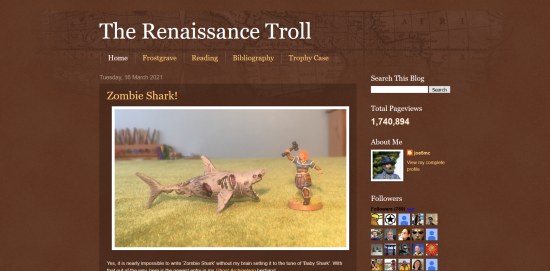The Editor is at his Workbench
and all is well with the world...
My dear wife is visiting with her parents, which means I'm "batching it" lately. It also means I have full and complete access to the kitchen table. (Let's hope my beloved never sees what I've done with it...)

I figure this is the perfect time to work like a fiend and mass produce a bunch of components for my new dungeon project. Here are some of the Hirst Arts molds, soaking in soaped water:

Today, I'm exploring how well Plaster of Paris works as a material for dungeon construction. A lot of people recommend the dental plasters, which are denser and more durable. However, Plaster of Paris is available in most communities, and can be purchased in small quantities inexpensively. I bought one 5-pound box of "no name" plaster at Home Depot for about $2.50 USD, and an 8-pound box for about $5 USD at A.C. Moore (a crafts store).

It's inconvenient to scoop the plaster out of these boxes, so I'm emptying them (but not mixing them together!) in a plastic bowl. Here, you can also see the percussion vibrator I'm using - it's made for massaging your back, but when held to the bottom of the table, it does a decent job of vibrating air bubbles out of the poured plaster.

I didn't take any pictures of the casting process, but if you're interested, there are plenty of tutorials on the Hirst Arts website. The basic idea is to pour cold tap water into a plastic cup (to a pre-measured level), then slowly sprinkle the plaster powder into the water until the water is entirely saturated with the plaster. Then stir, pour, wait a few minutes, scrape off the excess plaster from the tops of the molds, wait about twenty-five minutes, then de-mold the plaster bits.

The plaster "bricks" are set but still wet (and a bit soft), so I put them in a fruit dehydrator...

...which completely dries them in about two hours. (I also put freshly glued items on top of the dehydrator, letting the heat speed up the gluing time.)








